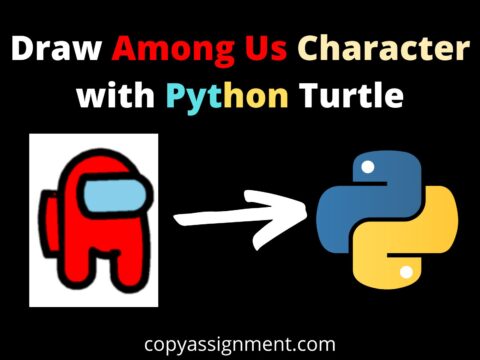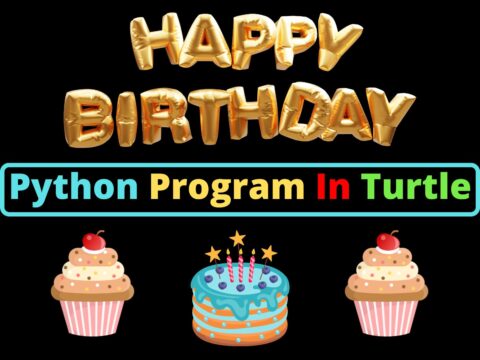
Vibe Coding Explained: A New Way to Code Without Coding?
Vibe coding is a new approach where you build software by simply describing what you want in natural language, and an AI-powered platform does the rest. The idea grew after tools like ChatGPT showed how quickly coding tasks could be automated. For example, setting up a React project used to take hours, but with AI it can be done in minutes.
By 2025, startups took this further — creating platforms where anyone can type instructions like “build me a web app” or “make a game,” and the system instantly generates a ready-to-use product. In short, vibe coding combines AI with development environments to let anyone create apps, games, or websites in seconds, without traditional programming.
When and Where Did Vibe Coding First Appear?
The idea of vibe coding didn’t appear overnight. Its roots trace back to the rise of large language models like ChatGPT in late 2022. At first, developers used these tools as assistants — asking them to debug, explain, or even generate snippets of code. What began as “AI pair programming” soon evolved into something bigger.
By 2024, early startups started experimenting with platforms that went beyond just code suggestions. Instead of writing line by line, users could describe an entire project in plain English and watch it come alive. These platforms transformed AI from a coding helper into a full development environment.
By 2025, the term “vibe coding” began circulating in tech communities to describe this shift: coding not through syntax, but through natural language and creative intent.
Do You Need Technical Skills to Start Vibe Coding?
The short answer: No. One of the biggest attractions of vibe coding is that it’s open to everyone. You don’t need to know programming languages or complex tools — just explain what you want in plain English.
Of course, there are limits. You may not be able to build something as advanced as PUBG, but you can still create simple apps, websites, or games. Think of it as a way to bring your ideas to life — even the ones you’ve never seen on the internet — by typing them into a vibe coding platform and letting AI handle the rest.
Real-World Use Cases: What Can You Actually Build With Vibe Coding?
1. Fly.pieter.com — The $1M Multiplayer Flight Sim from a Solo Creator
Story: Pieter Levels, a solo developer, described his idea—“make a 3D flying game in a web browser”—and used an AI coding IDE (like Cursor) to bring it to life in just a few hours.
Result: The game went viral, reaching over 320,000 players and earning more than $87,000 per month > $1 million in annual revenue via in-game ads. This epitomizes the “Minimum Vibable Product,” where speed and conversation-powered development lead to real financial success.
2. Replit-Powered Solo Tools — From E-commerce to £100 Health Apps
Story: Replit’s CEO, Amjad Masad, calls this era “vibe coding,” noting that anyone can build an app in an afternoon by simply prompting.
Examples:
- A Business Insider writer built an e-commerce site in six hours with his daughter using Bolt—all via natural-language prompts without writing code. Business Insider
- Replit’s annual recurring revenue (ARR) skyrocketed from $10 M to $100 M in just six months—a testament to how widely this workflow is catching on.
- A British doctor built a health-tracking app with about £100 cost.
- UX designer Rebecca Beach doubled her income to $20,000/month selling AI-generated digital products.
3. Qconcursos (Brazil) — $3M in 48 Hours from an Educational Platform
Story: A Brazilian ed-tech company used vibe coding to build a premium educational platform serving 500,000 paying users in just one month.
Result: It generated an estimated $3 million in revenue within the first 48 hours—underscoring vibe coding’s power for rapid, scalable deployments.
4. Biography Studio AI – Voice-Prompted Biographies, Built Solo
Investment firm co-founder Brad Lindenberg created Biography Studio AI using Replit, despite never coding before. The project took eight weeks and $1,500 worth of AI credits. According to Replit Agent, the estimated cost/time savings compared to traditional development (which would have required a team of eight and ~$1.7 million) highlight the cost-efficiency of vibe coding.
5. Dog-e-dex – Dog Breed Identifier (Emotional Impact & Plans to Monetize)
Product designer Cynthia Chen built Dog-e-dex, an AI-powered app that identifies dog breeds from photos and lets users curate collections. Built over two months using platforms like Replit and Anthropic’s Claude—despite no formal engineering training—the app garnered initial downloads and heartfelt user feedback. Chen plans to further market and monetize it. Read more here.
Best Vibe Coding Platforms in 2025 You Should Try
1. Lovable
- Why it stands out: Designed for non-coders, Lovable turns plain English into fully functional web apps—including frontend, backend, and integrations like Stripe and Supabase. It offers live rendering, intuitive editing, and GitHub sync(educationnext.in, Medium).
- Why you’ll love it: Ideal for entrepreneurs or beginners, with a gentle learning curve and powerful output.
2. Replit Agent (formerly Ghostwriter)
- Why it stands out: A browser-first AI-powered coding assistant offering instant app deployment, database setup, debugging, and code generation—all with natural prompts(Medium, No Code MBA).
- Why you’ll love it: Perfect blend of no-code simplicity and code back-end control—great for rapid prototyping.
3. Cursor
- Why it stands out: An AI-powered IDE with multi-file editing via natural-language prompts, rapid prototyping, and deep project modification capabilities(Fueler, Data Science Dojo).
- Why you’ll love it: Offers power and flexibility—excellent for creators who want control without boilerplate.
4. Bolt (Bolt.new)
- Why it stands out: Built for velocity—type your project idea, and Bolt instantly spins up a functional prototype in your browser(Fueler).
- Why you’ll love it: The go-to for quick demos, hackathons, or MVPs where speed matters.
5. Google Gemini Code Assist + Anthropic Claude Artifacts
- Gemini Code Assist: Google’s natural language coding partner supports prompt-driven workflows, context-aware generation, and tight Google Cloud integration(Data Science Dojo).
- Claude Artifacts (Anthropic): Lets users build full apps in-chat—everything from games to educational tools—with API-enabled functionality and real-time previews(The Verge).
- Why you’ll love it: Native integration with major AI ecosystems, whether you need prompt-powered coding or full app generation.
6. Webflow AI (AI Site Builder)
- Why it stands out: A visual web design platform with AI that turns simple prompts into full website themes. You can tweak layouts, SEO tags, and website elements afterward(dev.davia.ai).
- Why you’ll love it: A design-first vibe coding tool—great for marketers, designers, or business owners needing beautiful, fast sites.
At a Glance
| Platform | Best For |
|---|---|
| Lovable | Non-coders building full web apps |
| Replit Agent | Rapid prototyping with AI and deployment power |
| Cursor | Deep code control via natural language |
| Bolt | Fast MVPs or live demos |
| Gemini / Claude Apps | Prompt-driven app generation within AI tools |
| Webflow AI | Design-centric websites from prompts |
| Bubble / FlutterFlow etc. | SaaS and mobile app builders |
| Supabase AI backend | AI-assisted backend support |
| AWS Kiro | Structured AI project planning & execution |
Will Vibe Coding Replace Software Developers, Engineers, and Coders?
Short answer: No — at least not now.
Coding is much more than just writing lines of code. It involves understanding fundamentals, logic, architecture, and problem-solving — things AI still can’t fully replicate. That said, vibe coding has changed the landscape.
For beginners, it lowers the barrier to entry, making it possible to turn ideas into working apps or websites without deep technical knowledge. For experienced developers, it acts as a superpower — allowing one person to work at the speed of a full team by automating setup, boilerplate code, and repetitive tasks.
Think about it this way: when WordPress first came out, many believed it would eliminate the need for web developers. But here we are, more than 22 years later — WordPress is thriving, and web developers still play a critical role in building custom, complex solutions.
In the same way, vibe coding isn’t here to replace developers. It’s here to make coding faster, easier, and more accessible — empowering coders to focus on creative problem-solving while enabling non-coders to bring their ideas to life.
Career Opportunities: Can You Get a Job With Vibe Coding Skills?
Not directly — you won’t see jobs titled “Vibe Coder” yet. But vibe coding opens doors in other ways:
- Startups & Side Hustles – Launch apps, games, or websites and monetize them.
- Prototyping – Quickly build demos for product roles or innovation teams.
- Freelancing – Offer fast MVPs or landing pages to clients.
- Boost for Developers – Coders can deliver 10x faster using vibe coding.
- Teaching – Run workshops or tutorials to guide beginners.
👉 It’s less of a job title and more of a career accelerator — helping you earn, create, and stand out.
The Future of Vibe Coding: A Tool for Everyone or a Threat to Programmers?
Vibe coding is shaping up to be both a tool for the masses and a superpower for programmers. On one side, it lets anyone — even without technical skills — bring digital ideas like apps, websites, or games to life in minutes. On the other, it gives developers an edge, acting like a productivity booster where a single coder can work 10x faster or deliver the output of an entire team.
Instead of replacing programmers, vibe coding is more likely to redefine their role. Developers will spend less time on repetitive setup and boilerplate, and more time on creativity, logic, and solving real problems.
Looking ahead, vibe coding could become as common as using Google Docs — a tool everyone can use at some level. But just like calculators didn’t kill math, vibe coding won’t kill programming. It will shift focus from syntax to creativity, making coding more inclusive and innovation-driven.



